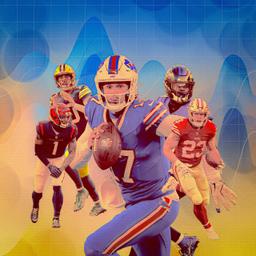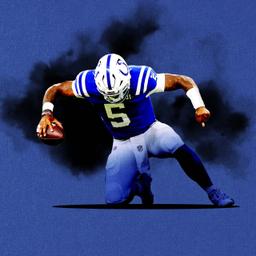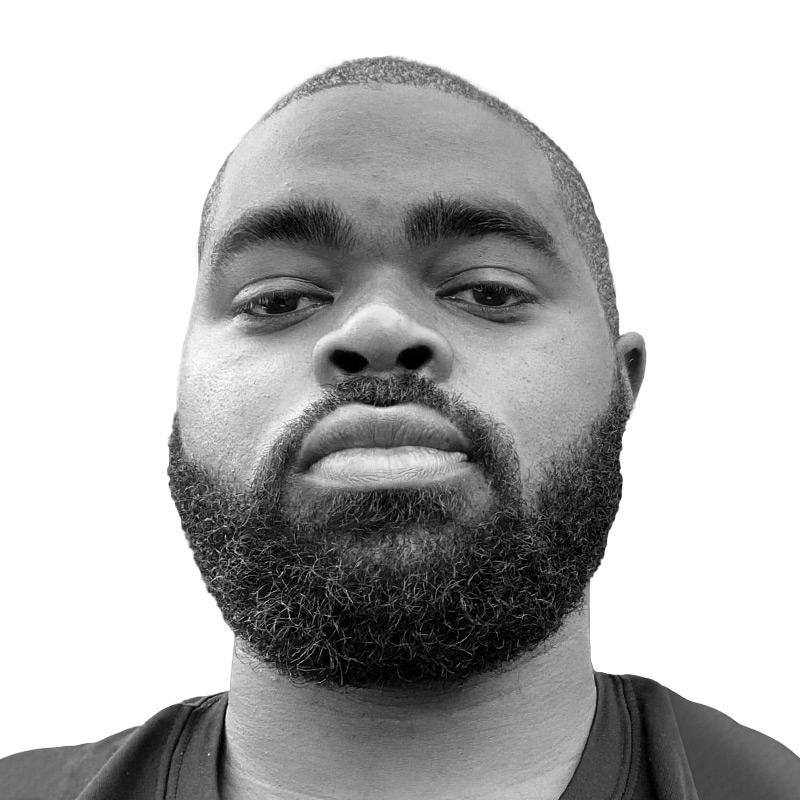Unless you’re Tom Brady, Father Time comes for every NFL quarterback. And he won’t arrive with a gentle knock and folded hands, waiting on the player to say when it’s time to retire. It’s more often a siege: He snatches the ball from the player’s hands when they still believe they have one last chance at seizing greatness. There’s no negotiating—it’s simply over when the body declares as such.
This is starting to feel like the season in which Matthew Stafford will be looking over his shoulder for Father Time’s arrival, and the Rams may be hearing the whispers of this era’s end.
Stafford began practicing this week after missing the first few weeks of training camp to deal with what was initially reported as “back soreness.” At first, his absence was presented as a matter of maintenance, a slow ramping up for a 37-year-old quarterback who has dealt with back issues before, with no real need for panic. Head coach Sean McVay has generally been forthright about injuries (and if you’re a fantasy football sicko, there are social media accounts that quantify this kind of thing). So if McVay didn’t seem worried, the football world was apt to believe him.
The plan seemed pretty straightforward: Stafford would work out privately and be on the field with his teammates by the second week of camp. But then it got, well, weird.
The throwing sessions got pushed back. And on August 6, NFL Media reported that Stafford’s back wasn’t merely sore—he was dealing with a disk issue, one painful enough that he needed an epidural for relief. Then, early last week, a trailer containing a multifaceted, therapeutic recovery chamber appeared outside of Rams practice, and Stafford spent time inside rather than practicing.
McVay stopped making any sort of proclamations about when—or if—Stafford would step on the field. “We’re trying to get our hands around [Stafford’s recovery] as well,” McVay said last week.
Finally, on Monday, Stafford suited up for the first time this summer. I watched from the sidelines as he took every snap with the Rams’ first-team offense that day, and if I hadn’t known about the back issues, I would have assumed he was simply shaking off some rust. His throws were still as accurate as you’d expect of a 17-year veteran (even drawing some “oohs” from teammates after fitting the ball between defenders), but he wasn’t dancing around pass rushers in the pocket like he did during the camp practices I watched last summer.
The most encouraging news of the summer for the Rams came on Tuesday, when Stafford was able to practice for a second consecutive day. Stafford was also on the field for a lower-speed walk-through-style practice on Wednesday. “I thought it was a step in the right direction, and we’re going to continue to hope he stacks days and feels good,” McVay said Tuesday.
The word “hope” is key. Stafford has been in the league long enough that it’s certainly possible he’ll be able to perform at a high level without needing a bunch of reps in training camp. But with the start of the 2025 season now just more than two weeks away, and with the NFC West up for grabs, you’d think McVay would at least like to see Stafford practice with some consistency in order to build chemistry with new receiver Davante Adams, prove that he can stay upright in the pocket, and show that whatever is wrong with his back won’t hinder his ability to make the big-time throws he’s famous for.
Stafford has dealt with injuries to his back before. In 2019, two seasons before he was traded from the Lions to the Rams, Stafford missed the second half of the season after suffering fractures in his back. He was given a six-week window to try to recover before being placed on injured reserve to finish the season. In 2022, a season after his run to the Super Bowl LVI victory with the Rams, a spinal cord contusion and concussion symptoms ended Stafford’s season after just nine games. This aggravated disc issue makes for three distinct back injuries in six years. He also had surgery to repair an elbow injury in 2021 and injured his thumb in the 2023 season. Last season, he essentially needed a rest in Week 18 after a poor three-week stretch of play in December (putting up a combined passer rating of just 75.7 from Weeks 15 to 17) before returning to play well in two postseason games.
While this week’s developments have alleviated a bit of the external panic about Stafford’s status, plenty of questions remain, including how healthy he truly is and whether we can expect the same day-to-day questions about Stafford’s status as the regular season begins. Recovery from back injuries, even for the greatest athletes, often isn’t linear, and the Rams may have to pull every lever on their contingency plan to keep Stafford on the field.
We should expect that Stafford will gut it out and play through pain as long as his team is in contention. A YouTube search for “Matthew Stafford playing hurt” should answer every question about his toughness. But it’s possible that the most important backup quarterback in the league is now Jimmy Garoppolo, who initially signed with the Rams in 2024 to be Stafford’s backup. He started for the Rams in Week 18 last season and handled the bulk of the first-team work over the first few weeks of camp while Stafford was sidelined. The Rams have been unwavering in their support for Garoppolo, the former starter in San Francisco and Las Vegas. “There’s no doubt in my mind [Garoppolo’s] a starting quarterback in this league, and I think he’ll get a chance to be able to do that again,” McVay said earlier in camp.
We shouldn’t assume the Rams went into the offseason knowing Stafford’s back would be an issue—and Stafford was not limited in offseason workouts—but with the knowledge we have now, it is interesting to look back at the moves the franchise made, decisions that in some ways have set the table for when Stafford is no longer trying to carry this franchise to its next championship.
After his off week at the end of last season, Stafford delivered another red-hot playoff surge—blowing out a 14-win Vikings team on a neutral field due to the devastation of last year’s fires in Los Angeles before coming up just short in a divisional-round road loss in the snow to the eventual Super Bowl champion Eagles. The Rams looked like a team on the rise, but one with an eye on the future. Since Stafford had a below-market contract and little guaranteed money left on the deal he signed with the Rams in 2022, the organization gave Stafford’s agent permission to speak with other teams about a potential trade. Ultimately, Stafford in late February agreed to a restructured contract to remain in L.A. for two more seasons.
The team also tried to trade veteran receiver Cooper Kupp—who had clearly lost a step and struggled to stay healthy after winning the receiving triple crown in 2021—and eventually released him and then let guard Jonah Jackson walk in free agency. The Rams’ only big free agent addition was Adams, the 32-year-old star who has played with the Packers, Raiders, and Jets.
To me, these types of offseason decisions signal that the window for this version of the Rams offense will be shut by the franchise in a year or two. While he’s flashed in spurts since his championship year in 2021, Stafford’s mid-to-late 30s haven’t been nearly as prolific as what we’ve seen from passers such as Drew Brees, Philip Rivers, and Tom Brady in their age-35-plus seasons. Given the slow start to training camp, it’s fair to wonder what sort of ceiling Stafford could hit now, at age 37.
Matthew Stafford vs. QBs 35 and Older
“We’ve taken it a year at a time, and he’s earned the right, I believe, to be able to say he can play for a few more years if that’s what he wanted,” McVay said after Stafford signed his extension last winter—but this organization has clearly been setting itself up for when Stafford is gone. If this year goes sour for Stafford and the Rams decide to move on, or if Stafford were to decide to retire, Los Angeles would become the most intriguing quarterback destination in the league.
Instead of drafting an heir apparent to develop as the third quarterback this offseason, the Rams opted to keep Stetson Bennett on the roster and traded their first-round pick (no. 26) to the Falcons in exchange for a 2026 first-rounder, giving this team incredible flexibility in the next draft—which is expected to be much deeper at quarterback than 2025’s draft. The Rams have the capital to take both a quarterback and another potential impact player, or combine the value of those picks in a trade to move up the draft board. Or those picks could be used in a trade package to acquire a veteran seeking a shot at a Lombardi Trophy, just like Stafford a few years ago.
With few veterans locked in beyond 2026 (running back Kyren Williams, who recently signed an extension through 2028, is a notable exception), an ascending defense led by future All-Pro Jared Verse (who is already filling Aaron Donald’s very big void), and a surplus of draft capital uncharacteristic for general manager Les Snead, this franchise has total control over its destiny once its current on-field leader is out of the building—a luxury rarely afforded to a team that’s kept itself in the mix for Super Bowls over this long of a stretch. It turns out the Rams were preparing as if the window on the Stafford era started to close on that snowy day in Philadelphia. If he has one last ride in him, if he can stave off Father Time just long enough to keep the Rams in contention in 2025, this team is still positioned to be one of the most dangerous in the NFC. If not, Los Angeles will still be one of the biggest teams to watch, potentially pivoting to a new franchise quarterback for the third time in McVay’s tenure.




